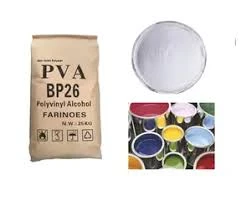Understanding Cellulosic HPMC Applications, Benefits, and Future Prospects
Hydroxypropyl Methylcellulose (HPMC) is a cellulose derivative that has gained significant attention across various industries due to its unique properties and versatility. Derived from natural cellulose, HPMC is a non-ionic, water-soluble polymer widely used in pharmaceuticals, food processing, and construction materials. This article explores the composition, applications, benefits, and future prospects of cellulosic HPMC.
Composition and Characteristics
HPMC is formed through the chemical modification of cellulose, a structural component of plant cell walls. The introduction of hydroxypropyl and methyl groups during synthesis enhances the solubility of cellulose, making HPMC an ideal candidate for various applications. Depending on the degree of substitution, HPMC can exhibit different properties such as viscosity, gel formation, and film-forming capability. This versatility is largely attributed to its ability to dissolve in cold water and form a stable, viscous solution, which is essential in many industrial applications.
Applications in Pharmaceuticals
One of the most significant applications of HPMC is in the pharmaceutical industry. It serves as a binder, thickener, and film-forming agent in the formulation of tablets and capsules. HPMC is also used for its controlled-release properties, enabling drugs to be released over an extended period, thereby improving therapeutic efficacy and patient compliance. Additionally, HPMC plays a crucial role in ophthalmic formulations, acting as a lubricant and stabilizer in eye drops. Its biocompatibility makes it a preferred choice for various drug delivery systems.
Food Industry Utilization
The food industry has also embraced HPMC, particularly as a thickening agent and stabilizer in sauces, dressings, and dairy products. HPMC enhances the texture and mouthfeel of food products, contributing to better consumer experiences. Its low-calorie content makes it a suitable option for reformulating items to meet health-conscious demands without compromising quality. Moreover, HPMC is utilized in gluten-free baking, providing structure and moisture retention that is often challenging to achieve without gluten.
cellulos hpmc

Construction and Building Materials
In construction, HPMC is used as an additive in cement-based products like tile adhesives, plasters, and grouts. It improves workability, open time, and water retention, thus enhancing the performance and durability of construction materials. The film-forming properties of HPMC ensure that these products maintain their integrity during the application process and bond effectively to surfaces. As sustainability becomes increasingly important, using HPMC can also contribute to the development of eco-friendly construction materials.
Benefits of HPMC
The benefits of HPMC extend beyond its functional applications. It is non-toxic, odorless, and does not pose any health risks, making it suitable for various consumer products, including food and pharmaceuticals. Its versatility allows manufacturers to customize formulations based on specific needs, ensuring that products meet stringent regulatory standards. Furthermore, HPMC is biodegradable, aligning with global sustainability goals and reducing environmental impact.
Future Prospects
As technology advances, the demand for HPMC is expected to grow significantly. Innovations in the development of high-performance grades of HPMC will open new avenues in various sectors. Researchers are exploring its potential in regenerative medicine and 3D printing, where its gel-forming capabilities could revolutionize bioprinting techniques. Additionally, as the focus on sustainability intensifies, the utilization of natural and biodegradable polymers like HPMC will likely increase, thus fueling demand.
Conclusion
In summary, hydroxypropyl methylcellulose (HPMC) stands out as a remarkable cellulose derivative with extensive applications across diverse industries. Its unique properties make it indispensable in pharmaceuticals, food processing, and construction. As industries continue to seek sustainable and efficient materials, HPMC is poised to play a critical role in future innovations, making it an essential component for advancements in health, nutrition, and building technologies. The ongoing research and development surrounding HPMC will undoubtedly unveil new opportunities and applications, solidifying its status as a cornerstone in modern material science.
-
The Application and Significance of Construction RdpNewsMay.19,2025
-
Industrial Grade HpmcNewsMay.19,2025
-
Building Coating Adhesive Building Coating Adhesive HpmcNewsMay.19,2025
-
Application Of Hpmc For Detergent For Detergent In DetergentsNewsMay.19,2025
-
Application Of Hpmc Cellulose In Cement-Based MaterialsNewsMay.19,2025
-
Application Of High Quality Hpmc For Construction In The Field Of ConstructionNewsMay.19,2025




